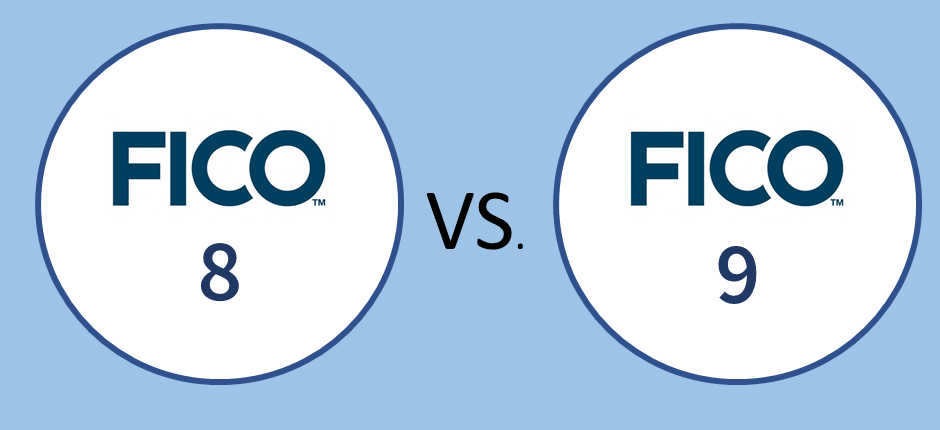Since FICO Scores were introduced to lenders over 25 years ago, they have become the best-known and most widely used credit score. But quite a bit has changed since lenders first started using FICO Scores in 1989.
To help lenders make more informed credit-granting decisions, and to help ensure you get access to the credit you need, the FICO Score model has been updated periodically over the years. The result is that there are multiple FICO Score versions available.
myFICO.com lists Scores 2, 3, 4, 5 and 8, in addition to Score 9. There are also individual variations of each available for mortgage lending, auto loans, and credit cards.
Score 8 is the most widely used, while Score 9 is the most recent.
FICO 2, 4, and 5 are similar. The main differences between the three is that 2, 4, and 5 use data from Experian, TransUnion, and Equifax, respectively. Mortgage lenders pull one of each and compile the reports in a document called a Residential Mortgage Credit Report. Duplicate data is screened and removed, and the middle score of the three is picked to represent your worthiness to pay back the mortgage.
If you want a little background, here is a video explaining what FICO is:
FICO 8 vs. 9: What Are the Differences?
FICO 9 is like FICO 8, but differs when it comes to collections and rent payments. FICO 9 counts medical collections less harshly than other accounts in collections, so a surgery bill in collections will have less of an impact on your credit score than a credit card bill in collections.
Additionally, FICO 9 ignores accounts in collections that have a zero-dollar balance. If you had a credit card account go to collections but later paid it off, FICO 9 will no longer use said collections account against your score. This is different than FICO 8, which factors all collections amounts of $100 or more into your FICO score—even if they’re completely paid off.
Just because collections with a zero balance are ignored by FICO 9 doesn’t mean that lenders will ignore them. Credit bureaus will still show these collections on your full credit report, and lenders will see them when they review your full credit history.
Finally, FICO 9 factors rental history into your credit score. This makes it easier for people with no credit to build a high credit score with monthly rent payments that are paid on time. However, this is unfortunately dependent on your landlord reporting rent payments to credit bureaus, which doesn’t happen often.
Most lenders have yet to adopt FICO 9 since it’s still new to the market. This will change as time goes on, so you may want to start monitoring your FICO 9 score now to ensure you don’t have any surprises as the years go on. You can pay to view your official FICO 9 score on FICO’s official credit monitoring service. Unfortunately, there is no one offering a free FICO 9 score currently.
How is FICO Score 8 different from previous versions?
While the basic principles of the FICO Score 8 are consistent with previous versions, there are several unique features that make up FICO Score 8:
- High credit card usage
While all FICO Score versions consider high credit card utilization to be reflective of higher risk, FICO Score 8 is more sensitive to highly utilized credit cards. So, if a credit report shows a high balance close to the card’s limit, FICO Score 8 will likely be more impacted than a previous score version. - Single Occurrence of a late payment
If a lender reports to the credit bureau that you were at least 30 days late with your payment, it will likely result in a loss of points within all FICO Score versions. If the late payment is an isolated event and other accounts are in good standing, FICO Score 8 is more forgiving compared to previous FICO Score versions. However, if the credit report shows numerous late payments, the reverse is true and the FICO Score 8 will likely lose more points as compared to previous FICO Score versions. - Authorized user of credit card
All FICO Score versions include authorized user credit card accounts when calculating a FICO score. This can help people benefit from their shared management of a credit card account. It also helps lenders by providing credit scores that are based on a full snapshot of the consumer’s credit history. However, it could hurt you if you are an authorized user on a credit card that is carrying a high balance.
To protect lenders and honest consumers, FICO Score 8 substantially reduces any benefit of so-called “trade line renting.” This is a credit repair practice that entices consumers into being added to a stranger’s credit account to misrepresent their credit risk to lenders.
- Small-balance collections accounts
FICO Score 8 ignores small-dollar collection accounts in which the original balance was less than $100.
What’s new about FICO 9?
FICO Score 9 is the newest FICO Score version, and it has important updates that make it the most predictive FICO Score yet.
- Third-party collections that have been paid off no longer have a negative impact.
- Medical collections are treated differently than other types of debt. Unpaid medical collections will have less of a negative impact on FICO Score 9.
- Rental history, when it’s reported, factors into the score? This may be especially beneficial for people with a limited credit history.
Who uses What version of FICO?
Here is a quick summary of what lending agencies use the various FICO models.
- FICO 9 The Newest version. Not widely used yet.
- FICO 8 The Most common. Used for Auto and Credit Card lending.
- FICO 5 Used by Mortgage Lenders. Built on data from Equifax.
- FICO 4 Used by Mortgage Lenders. Built on data from TransUnion.
- FICO 2 Used by Mortgage Lenders. Built on data from Experian.
Conclusion: What is different about FICO 8 vs. 9?

FICO 9 breaks a lot of new and beneficial ground, including the exclusion of medical collections from the calculation of a consumer’s credit score and the inclusion of rental history, which can help those who have limited credit but pay their rent on time.
Third-party collections, once they’re paid off, will also no longer be a factor in your credit score, meaning you no longer have to wait seven years to get rid of an old mistake.
If you want to dig in a little deeper on this topic, you can learn more out more about FICO here…


 FICO vs. Vantage Score: What’s the Difference?
FICO vs. Vantage Score: What’s the Difference?